Spring and fall are the best planting times, but it can be all too easy to end up with an empty wallet and a garden filled with struggling, diseased or even dead plants. Thankfully, visits to the nursery can be enjoyable, and successful, as long as you arm yourself with the knowledge to ensure you will come home with beautiful, healthy plants that will increase the curb appeal of your home and garden.
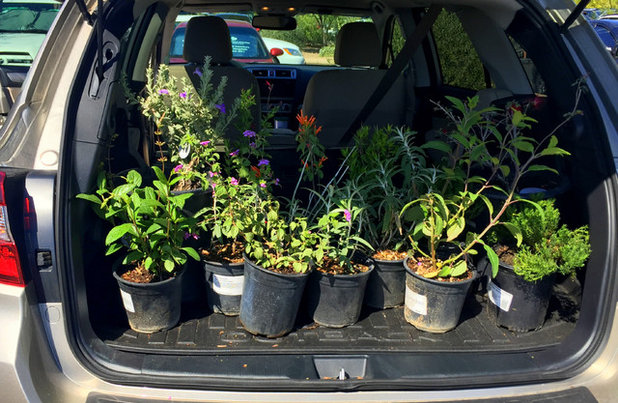
Noelle Johnson Landscape Consulting
1. Plan before buying. Before you head out to the nursery, it’s important to study the area in your garden where you plan to add your new plant or plants. Here is what you will need to know about the proposed planting location:
- Exposure: Does it get full sun, filtered sun or shade? What direction does the plant location point toward? For example, areas that face west often get hot full sun in the late afternoon, while northern exposures tend to be shady. Planting sites that face east get morning sun and afternoon shade, and southern exposures get an even amount of sun all day.
- Space: How much room is there for a plant to grow? If it is a large area, you may need several smaller plants or a single plant that will grow large.
- Soil: What type of soil do you have? There are three main types of soil — clay, loam and sandy — and often plants have a preference for a specific type.
Get the Dirt on Your Garden’s Soil
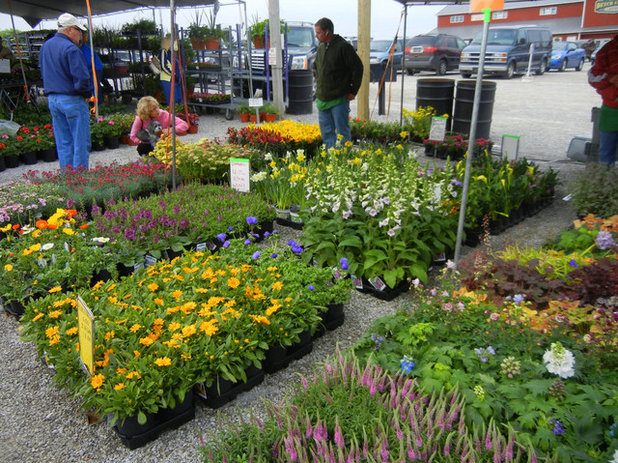
Noelle Johnson Landscape Consulting
2. Avoid impulse buys. It can be easy to fall in love with the vibrant blooming plant prominently displayed at the nursery and then buy it without knowing where it will go in the garden or even if it will do well in your climate. This can result in a plant that has a decreased chance of survival.
Sadly, it isn’t uncommon for some large chain stores to sell plants that are ill-suited to the particular climate they are located in. Your best bet is to walk on by that pretty plant, unless you have time to do a little research. First, contact your local cooperative extension office and ask to speak with a Master Gardener who can provide you with helpful information.
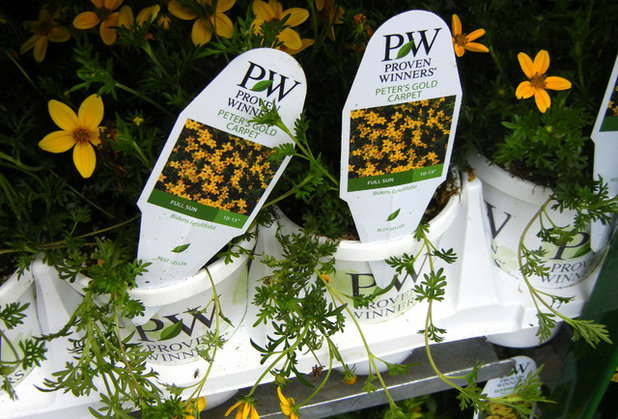
Noelle Johnson Landscape Consulting
3. Read the label. Most plants come with their own instruction manual in the form of a plant tag. Types of information that you can find on the tag include the name of the plant, how big it will grow, when it will bloom, what exposure it needs and its water requirements. All of the plant’s information isn’t always listed on its tag, but with the name, you can do a little online research on your own.
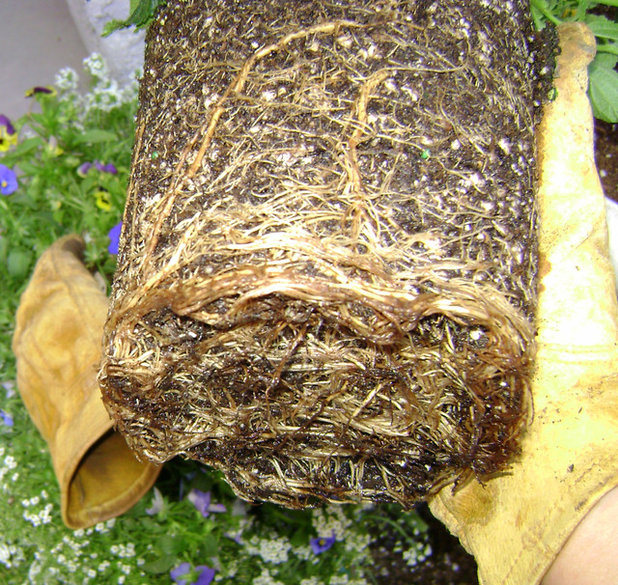
Noelle Johnson Landscape Consulting
4. Know the signs of unhealthy plants. Unfortunately, there can be some unhealthy plants present at the nursery. Here are some warning signs to look out for so you can make sure you won’t take home an ailing plant.
- Yellowing leaves: This can be an indicator of nutrient deficiency, overwatering or both.
- Root-bound plants: When plants have been growing in their nursery container too long, their roots begin to grow in circles, making it hard for them to absorb water or nutrients. A sign of a root-bound plant includes its roots growing through its container’s drainage holes, or you can ask the nursery professional to carefully pull the plant from the pot so that you can see the root system. Root-bound plants will have a thick mat of roots at the bottom and around the sides of the plant, as shown in this photo.
- Pests or disease: Plants at the nursery can be harboring harmful insect pests or diseases, which can infect nearby plants in your garden. Check the leaves for spots or speckling, which can be a sign of damage. Insects tend to hide underneath leaves or on stems.
- Weeds: Look closely at the top of a plant’s rootball to be sure there aren’t any weeds lurking, trying to hitchhike their way to your home. You can simply pull the weeds out before planting.
- Wilting leaves: It’s obvious that a plant hasn’t been watered enough at the nursery when its leaves begin to wilt. Sometimes all plants need is a good deep watering to recover.
Learn how to identify common plant ailments through leaves

Noelle Johnson Landscape Consulting
5. Choose buds over blooms. Let’s face it, the flowering plants are what draw our attention as we stroll down the nursery aisles. As tempting as shrubs in full bloom are, it’s wiser to buy a plant that hasn’t flowered yet.
Imagine if you came home with a hydrangea plant that was covered with colorful flowers, and you planted it. You would expect to enjoy its flowers for a long time. A good portion of its flowering occurred while it sat at the nursery, however, so the amount of time that the flowers will remain open at your home is limited. In addition, transplanting new plants is stressful and can cause flowers to drop. If you had bought the hydrangea that had unopened blooms, its flowers would have opened shortly after planting and you would have enjoyed a longer bloom season.
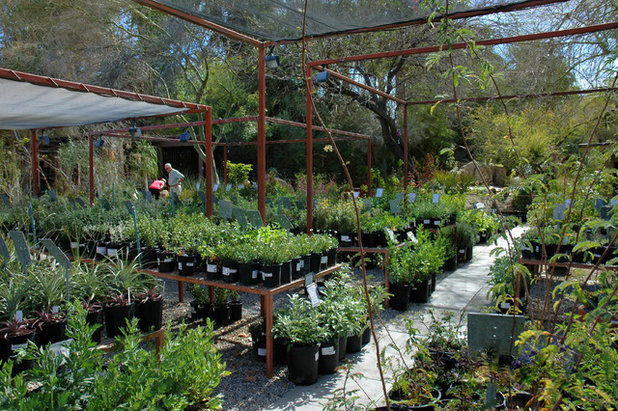
Noelle Johnson Landscape Consulting
6. Don’t be afraid of small plants. We may be tempted to buy a larger, more mature plant, as opposed to a smaller one, but you may be wasting your money. For example, a 1-gallon perennial or shrub is younger and better able to handle the stresses of planting than a 5-gallon plant. In addition, smaller plants initially grow more quickly than larger ones do. They also cost less money and save you time when planting.
There are times, however, when a larger plant is a better choice. If you are looking for an instant impact or have chosen a slow-growing plant, then the bigger size may be the best choice.
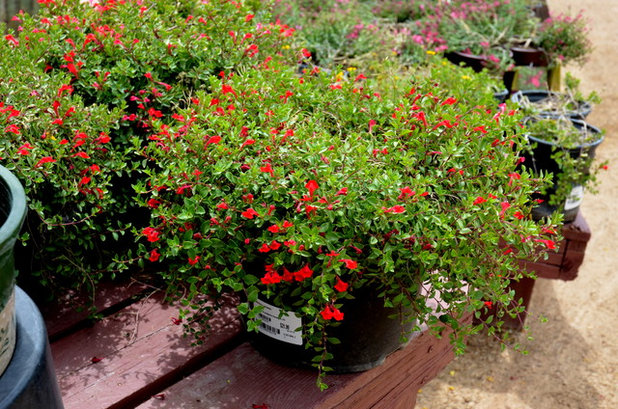
Noelle Johnson Landscape Consulting
7. Buy local plants whenever possible. Plants have a much higher chance of survival if they’re planted close to where they were grown, where the climates are similar. Plants that have been brought in from a different climate may not have had the chance to acclimate to new weather conditions. For example, plants grown in California enjoy the mild, Mediterranean climate. A shipment of plants from California to the hot, dry desert or cold, mountainous regions can suffer and even die if the plants haven’t had a chance to “harden off” — that is, to gradually get used to a change in temperatures.
Whenever possible, ask your nursery professional for plants that come from local growers.
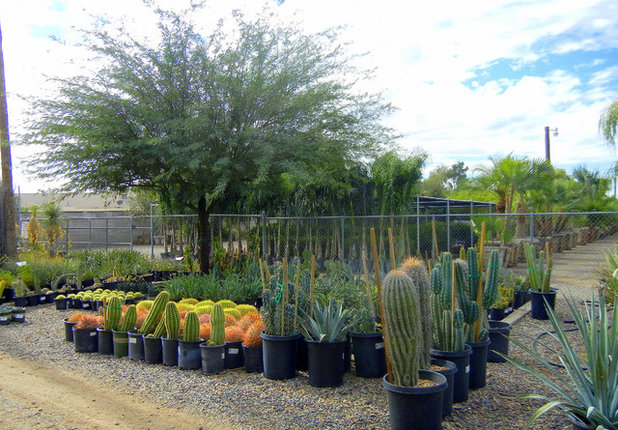
Noelle Johnson Landscape Consulting
8. Check for a warranty. Does the nursery where you shop offer a warranty? There are some nurseries, usually larger ones, who offer warranties in case plants die within a few months after planting.
Many smaller, local nurseries don’t. The reason for this is that they cannot control how the customer waters or cares for the plant, which may result in its death.
If you are choosing a plant that isn’t easy to grow, you may want to find a nursery that will offer a warranty for that plant. Or you can always buy a plant that is easy to grow in your area, so that a warranty will most likely not be needed.
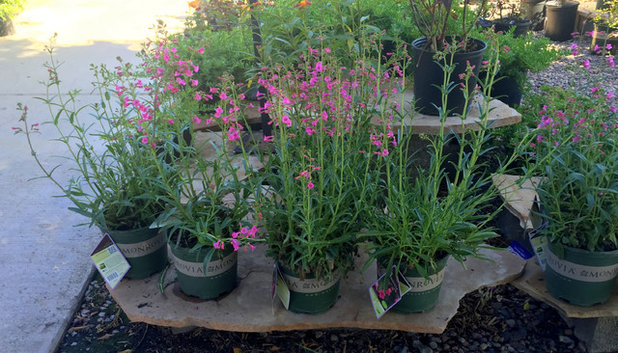
Noelle Johnson Landscape Consulting
9. Ask a certified nursery professional. If you have questions about a particular plant or need help selecting the right type of plant for your landscape, ask the certified nursery professional or horticulturist at the nursery where you are shopping. They have completed lengthy training and can be an invaluable resource.
It’s important to note that not everyone who works at a nursery knows a lot about plants, so don’t be afraid to ask to speak with the certified nursery professional on staff about your questions.
Shown: Parry’s penstemon (
Penstemon parryi)
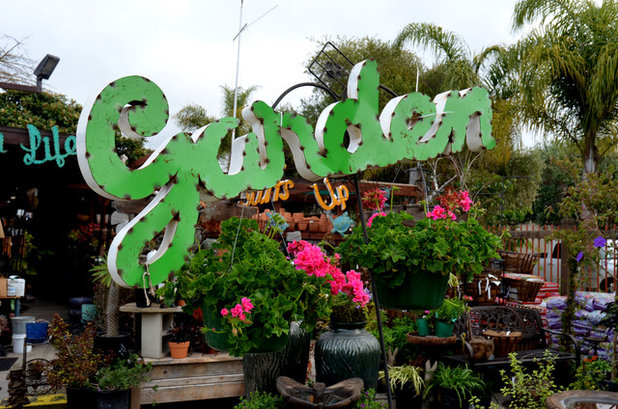
Noelle Johnson Landscape Consulting
10. Choose the nursery that suits your needs. There are several types of places where you can go to buy plants.
- Local nursery: These nurseries are usually locally owned, with one to several locations scattered throughout a city or metro region. They tend to be the best resource for a wide variety of plants that are locally grown and are adapted to your region. The staff is also generally very knowledgeable about the gardening challenges that are unique to your area and how to deal with them.
- Big-box store and large-chain nursery: Because of their size and buying power, they offer the cheapest prices, and new plants are delivered frequently. Warranties are also more likely to be offered at these types of nurseries.
- Botanical garden plant sale: This is a great resource for both common and hard-to-find plants that are well-adapted to your climate. These sales are typically offered in spring and sometimes also in fall. Some gardens have a year-round nursery where visitors can buy plants.





